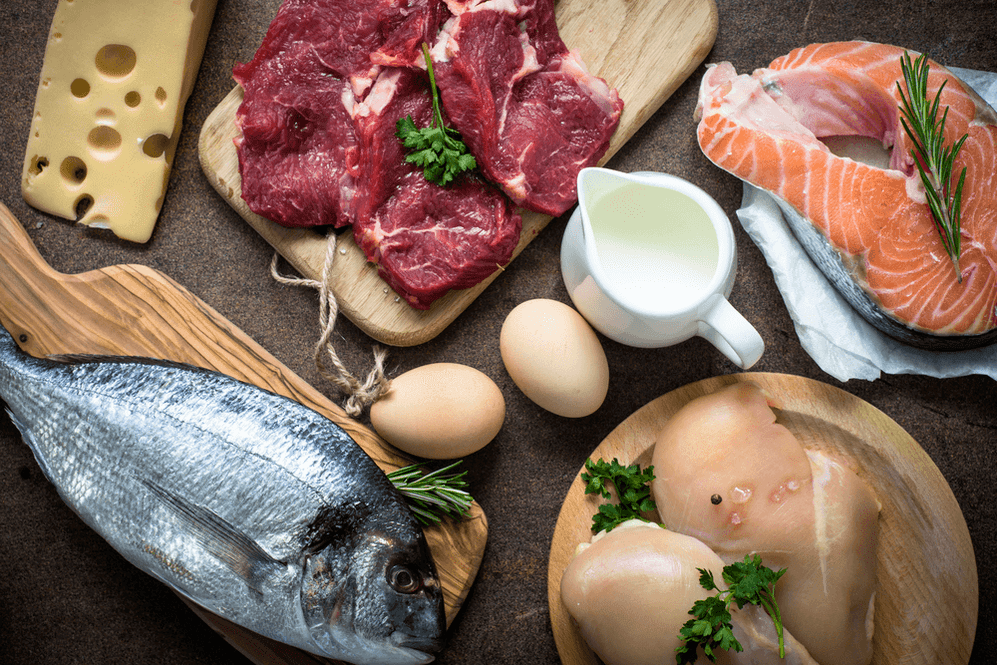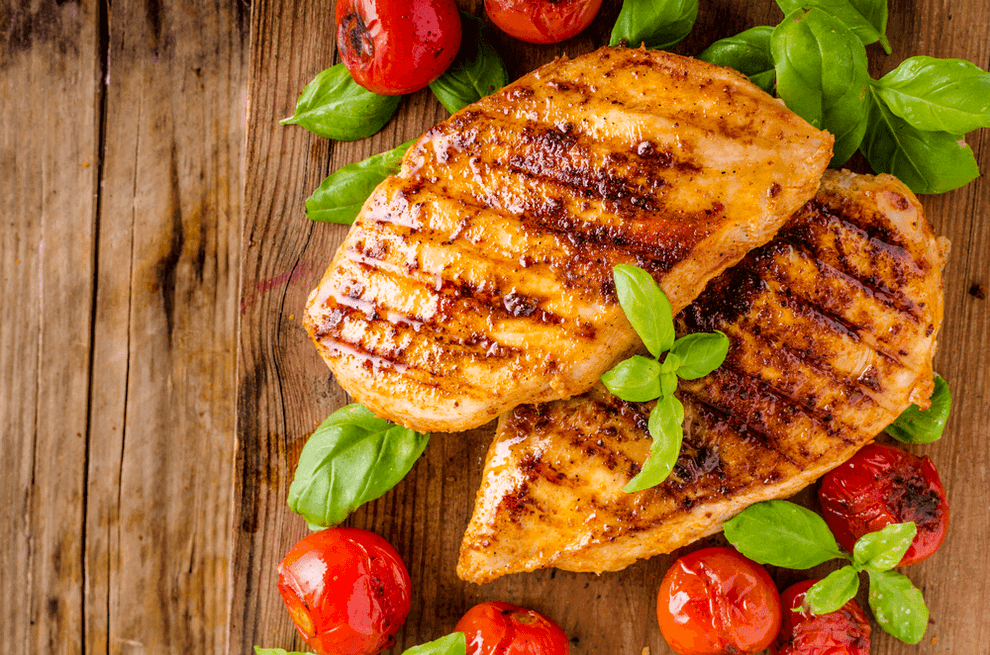
Excess weight is often caused by excess accumulation of adipose tissue accumulated as a result of chemical transformation of carbohydrates entering the body. And despite the fact that obesity is based on certain disorders of the endocrine and digestive system, the most convenient and painless solution to the problem remains to limit the source of excess calories in the daily diet. By cutting off or drastically reducing easily digestible carbohydrates from reaching the stomach using a low-carbohydrate diet, we automatically trigger a response to burn stored reserves.
What is a no carb diet?
On the basis of a strict carbohydrate-free diet, athletes lose extra pounds before competitions, artists before filming, and public figures when they need to get in shape. Athletes have a special term for such nutrition. It is called "drying" - by eliminating carbohydrates from the diet, the remains of subcutaneous fat are removed and the relief and flexibility of ligaments and muscles are improved. And life without carbohydrates is a difficult test for people with a sweet tooth, who are forced to radically change their taste preferences and for a long time. It requires not only determination but also a fair amount of patience and willpower.
There is another side of the coin - the complete rejection of carbohydrates in favor of protein products creates a condition that nutritionists call carbophobia (literally "fear of carbohydrates"). Avoiding a small crumb of bread or a lump of fiery sugar, thinking about nothing but weight loss, sitting on "omelets and meatballs" for months, lovers of low-carb diets will inevitably "find" digestive and metabolic problems. in some cases higher nervous system disorders, activity, memory loss, depression and sociopathy.
Long-term or constant refusal of carbohydrates leads to a violation of the body's acid-base balance in the direction of oxidation, which inevitably leads to a decrease in immunity and premature aging. Side effects of a long-term low-carb diet include problems with the intestines, kidneys, arthritis, gout and other diseases.
Below we will consider several examples of a carbohydrate-free diet and the scheme of its use, which allows you to normalize metabolic processes, lose excess weight, and at the same time do not supply the body with proteins and energy. Harmless chemistry and energy from animals.
Biochemical and Anatomical Basis of Low Carbohydrate Diets
The decisive argument of a low-carbohydrate diet is the peculiarity of the body's reaction to the entry of small amounts of sugar into the stomach. The pancreas immediately reflexively starts releasing insulin into the blood and digestive enzymes into the stomach, which immediately increases the appetite (hence the saying that appetite comes with eating). As a result, when we eat foods rich in carbohydrates, we almost always eat more than we objectively need. Protein foods do not have a seductive effect on the "pancreas", the production of hormones and enzymes is in working order, satiety occurs slowly and completely. Proteins are broken down in the gastrointestinal tract more than carbohydrates, so the feeling of satiety lasts for several hours, and if you eat three or four proteins a day, the need for a snack simply does not appear.
The principle is 250 kcal
Apparently, it is impossible to completely avoid carbohydrates - just because they are included in protein foods, even if they are minimal. However, this is not dangerous, the main thing is that the "carbohydrate" kilocalories do not exceed the specified number.
A low-carb diet certainly takes willpower, but it can be very disciplined. It is enough to remember only one number - 250. This is the number of energy units - calories, which are contained in the daily amount of carbohydrates that enter the body. Of course, we will need to carefully weigh all foods and calculate their energy value using special tables or notes on the restaurant menu, but this is an almost inevitable cost of any strict diet.
Carbohydrate mono-diet: effective, but monotonous
An ideal low-carb diet for guaranteed and fast weight loss includes separate daily meals - on the first day of the diet you eat only chicken, on the second - eggs, and on the third - only cheese or cottage cheese. This is the fastest, but most "tasteless" and monotonous way to lose weight. Not everyone is ready for such sacrifices, so we lose weight without fanaticism and combine business with pleasure - the gastronomic pleasure and healing effect promised by delicious and healthy products based on animal and vegetable protein.
By the way, the above-mentioned critical 250 carbohydrate kilocalories per day should be obtained not from buns and sweets, but by the harmonious introduction of complex carbohydrates (highly digestible) into the diet - starchy vegetables, whole grains, whole grains without yeast. bread bread
Basic ingredients for a low-carb menu
Here is a list of recommended protein foods for a protein diet:
- lean meat - chicken, turkey, rabbit, beef;
- offal - cooked heart and liver;
- duck, chicken, quail eggs;
- fillets of marine fish, crabs, shrimps, lobsters, marine cephalopods;
- dairy products - kefir, yogurt, cottage cheese, low-fat cream and hard cheese;
- leafy vegetables (cabbage), artichokes, green beans, peas, zucchini, onions, garlic, garden herbs. You can eat mushrooms, but with caution, because mushroom proteins are different from animal proteins;
- sour fruits and berries, as well as avocado;
- nuts and seeds.
Meat and fish should be steamed, cooked in the oven or on the maximum grill, but in no case pan-fried or deep-fried.
A healthy diet eliminates sausages, sausages and pates, which contain many questionable additives based on carbohydrates and transgenic fats.
When choosing food suppliers, preference should be given to farms where meat and dairy animals are raised in comfortable conditions and whose feed is free from various growth hormones and antibiotics. You should not trust the price tags in supermarkets - if you follow a diet, carefully read the instructions on the package and study the list of food additives in advance, most of them are unhealthy, but are used in the production of known "healthy" products.

Forbidden carbohydrates
Now the main thing for every diet is what is forbidden. The following are prohibited in a low-carbohydrate diet:
- bread other than whole grains without yeast;
- everything made of flour - pasta, pizza, pies, khachapuri, cakes, pastries;
- chocolate and confectionery products;
- sweet and sour fruits and berries;
- vegetables rich in starch (potatoes, carrots, corn, beets);
- semi-finished industrial products. No matter what manufacturers write on their packaging, they almost always contain added carbohydrates and preservatives, and even genetically modified fats;
- fruit juices and carbonated drinks;
- alcohol in any form.
For staunch carnivores, it's hard to resist a glass of red wine with your favorite steak, but here's the choice: health or pleasure. In addition to its direct toxic effect on the body, alcohol is also a strong appetite stimulant and a fairly high-calorie product - calories from it can be safely added to the daily limit of 250 kcal in the protein diet.
7 day menu

Monday
- Breakfast - low-fat cottage cheese pies with bran.
- Lunch - vegetable salad with herbs, 200 g of chicken breast with herbs.
- Snack - orange.
- Dinner - Turkey with 100 g of cooked vegetables.
Tuesday
- Breakfast - vegetable salad or omelette with boiled vegetables. Black tea without sugar.
- Lunch - vegetable cream soup with turkey or chicken.
- Snack - green apple.
- Dinner - Tandoori baked salmon.
Wednesday
- Breakfast is unsweetened muesli with milk and dried apricots or other dried fruit.
- Lunch - chicken breast and lentil soup.
- Snack - almonds or other nuts (a handful).
- Dinner is a salad of cherry tomatoes, arugula, canned tuna (1 can), and mozzarella.
Thursday
- Breakfast - oatmeal with water without sugar. One banana (crushed and can be added to oatmeal).
- Lunch - veal and vegetable soup.
- Snack - Orange or grapefruit, a glass of citrus juice.
- Dinner - low-fat steamed fish.
Friday
- Breakfast - Blend 1 banana, a cup of fresh or thawed cherries and a cup of milk. Blend in a blender.
- Lunch - chicken pilaf 200 g.
- Snack - green tea with hard cheese.
- Dinner - chicken or turkey with vegetable salad.
Saturday
- Breakfast - egg white omelette. Tea without sugar. 1 banana.
- Lunch - Boiled chicken with 100 g of brown rice.
- Snack - A sandwich made of unleavened bread, soft cheese, ham, lettuce and sliced tomatoes.
- Dinner - meat and vegetable saute. A glass of kefir or unsweetened drinking yogurt.
Sunday
- breakfast - 1 boiled egg. Diet bread with hard cheese.
- Lunch - cream soup made from champignons or wild mushrooms. You can add ground turkey or chicken to the soup.
- Snack - Orange, green apple or a handful of nuts.
- Dinner - Vegetable salad, 100 g of baked meat or fish.
Porridge for a low-carb diet
Porridge in water occupies a borderline position. When following a carbohydrate-free diet, it is recommended to include four types of cereals in the menu:
| Are not. | name is | Protein content | Carbohydrate content |
|---|---|---|---|
| 1 | buckwheat | eleven% | 68% |
| 2 | beans | 21% | 50% |
| 3 | Beautiful | 12% | 65% |
| 4 | Quinoa | 14% | 64% |
Porridge is especially useful during active weight loss between intervals, when it is necessary to restore the balance of fats, proteins and carbohydrates in the body.
A questionable alternative: the keto diet, a very popular type of low-carb diet in the United States with its famous fast-food culture, is the ketogenic diet, which allows you to eat high amounts of animal fats as well as proteins. This scheme has both supporters and opponents. The main argument of the last is the damage of fatty foods to the cardiovascular system due to cholesterol deposits on the walls of blood vessels. Hard to disagree with that.
Diet timing and precautions
The effect of the diet will begin to be noticed after two to three weeks, and you can lose weight within a week after switching to proteins by strictly eating separately every day. Limiting fast-digesting food almost inevitably leads to gastrointestinal problems - constipation, flatulence, caused by a decrease in plant fiber in the diet. When eating a meat menu or eating fish and seafood, you should drink at least two liters of liquid a day, eat soup, and if you have persistent constipation, you should take mild laxatives. After a month, in order to prevent the development of permanent carbophobia, it is necessary to take a break - from two to four weeks. It restores disturbed protein-carbohydrate balance and intestinal motility. While taking a break from the diet, you should not go too far: the diet should be balanced and strict, otherwise you will not only lose all the gains, but you will have additional fat deposits and you will have to start the fight. again against overweight.














































































